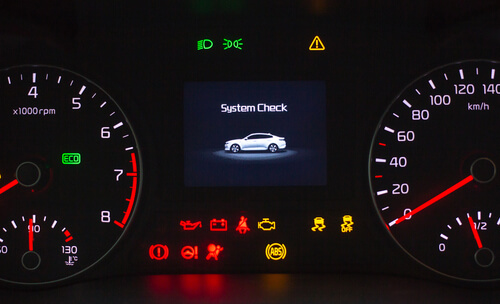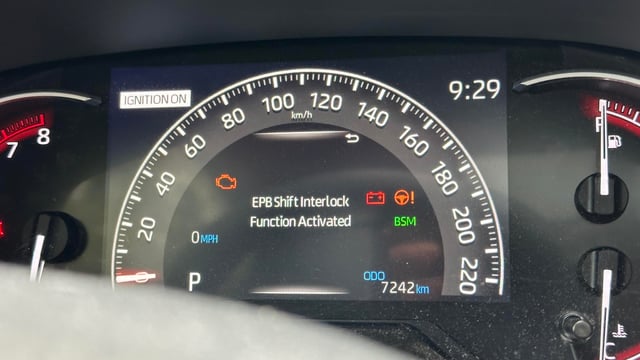How Many Volts is a Car Battery: Essential Guide
A standard car battery is typically 12 volts when fully charged, though the actual reading may range from 12.6 to 12.8 volts. When the engine is running, the alternator increases the voltage to about 13.7 to 14.7 volts to keep the battery charged and power the vehicle’s systems.
You don’t need to be an expert to grasp this concept, and that’s why you’re here. By the end of this article, you’ll confidently understand the voltage that powers your ride and why it’s crucial for your car’s health. Uncovering these insights will empower you to make informed decisions about your vehicle’s battery and avoid the frustration of a stalled engine.
Dive in, and let’s demystify the voltage of a car battery together!
How Many Volts is a Car Battery
Car Battery Basics
Car batteries power the electrical components of your vehicle. They are crucial for starting the engine and running accessories. Understanding the basics helps maintain your car’s performance.
What Is A Car Battery?
A car battery is a rechargeable power source. It supplies electricity to start the engine. It also provides power for lights, radio, and other features.
Standard Voltage Of A Car Battery
Most car batteries have a standard voltage of 12 volts. This voltage is suitable for most vehicles. It ensures efficient operation of electrical systems.
Read more: How Do You Remove Water Spots from a Car: Expert Tips
Why Voltage Matters
Voltage affects the performance of your car’s electrical components. A proper voltage keeps everything running smoothly. Low voltage can cause issues with starting and accessories.
Regularly check your car battery’s voltage. Use a multimeter for accurate readings. This helps detect problems early and avoid breakdowns.

Credit: www.batteriesplus.com
Read more: How to Get the Smoke Smell Out of a Vehicle: Expert Tips
Standard Voltage Levels
Understanding the standard voltage levels of a car battery is essential. It helps in maintaining your vehicle’s health and efficiency. Most car owners are familiar with the basic concept of voltage. But not everyone knows the specific numbers associated with car batteries. Let’s dive into the standard voltage levels of car batteries.
The Typical Voltage Of A Car Battery
A standard car battery usually has 12 volts. This voltage level is common in most vehicles today. It provides enough power to start the engine. It also supports the car’s electrical systems. When fully charged, it can show around 12.6 to 12.8 volts. This is the ideal range for a healthy battery.
Voltage Levels Under Different Conditions
Battery voltage can vary under different conditions. When the engine is off, the voltage should be around 12.6 volts. If it’s below 12 volts, the battery might be weak or dead. During engine operation, the voltage should range between 13.7 and 14.7 volts. This ensures the alternator is charging the battery properly.
Impact Of Temperature On Voltage Levels
Temperature affects battery voltage significantly. In cold weather, a car battery’s voltage may drop. This can make starting the engine more difficult. Conversely, high temperatures can increase voltage levels. But extreme heat can damage the battery over time.
Why Voltage Levels Matter
Maintaining proper voltage levels ensures your car runs smoothly. It prevents electrical issues and prolongs battery life. Regularly checking voltage helps identify potential problems early. This can save you time and money on repairs.
Factors Affecting Voltage
Understanding the factors affecting a car battery’s voltage is essential. It helps in ensuring its optimal performance and longevity. Various elements influence the voltage levels in a car battery. Each plays a crucial role in maintaining the battery’s health and efficiency.
Temperature
Temperature affects a car battery’s voltage significantly. Cold weather can lower voltage. It slows down chemical reactions within the battery. Heat, on the other hand, might increase voltage but can cause damage. Always consider the ambient temperature for accurate voltage readings.
Battery Age
Older batteries tend to have lower voltage levels. As a battery ages, its capacity to hold charge diminishes. Regular checks on battery age help in understanding its voltage output.
Charge Level
The charge level directly impacts voltage. A fully charged battery usually shows around 12.6 volts. A discharged battery will show a lower voltage. Regular charging maintains optimal voltage levels.
State Of Health
The state of health reflects the battery’s overall condition. A healthy battery maintains consistent voltage. Signs of wear and tear can reduce voltage. Regular maintenance checks are vital for assessing health.
Load
The load on a battery also affects voltage. High electrical demand can decrease voltage levels. It is crucial to manage the load to maintain stable voltage. Ensure all electrical components function efficiently.
Internal Resistance
Internal resistance rises with age and usage. Higher resistance can lower voltage output. This resistance causes energy loss within the battery. Monitoring resistance helps in maintaining proper voltage.

Credit: batteryspecialists.com.au
Checking Battery Voltage
Checking the voltage of your car battery is crucial. It helps ensure your vehicle starts smoothly. Voltage checks can prevent battery failures. Most car batteries have a standard voltage. But, how do you measure it? Let’s dive into the details.
Understanding Car Battery Voltage
A fully charged car battery usually reads 12.6 volts or above. This voltage indicates it’s in good health. A reading below 12.4 volts may mean trouble. It can signal a weak battery. Regular checks help maintain battery health.
Tools Needed For Voltage Check
To check battery voltage, a multimeter is essential. This tool measures electrical values. Ensure it’s set to measure DC voltage. A properly working multimeter is crucial. It provides accurate readings of your battery.
Step-by-step Guide To Checking Voltage
First, turn off your car’s engine. This prevents false readings. Next, connect the multimeter’s positive lead to the battery’s positive terminal. The positive terminal is usually marked with a plus sign (+). Then, connect the negative lead to the negative terminal. This terminal often has a minus sign (-).
Now, read the voltage displayed on the multimeter. A reading between 12.6 and 12.8 volts is ideal. If the reading is lower, your battery might need charging.
Interpreting The Voltage Results
High voltage readings might indicate a charging system issue. If the voltage is too low, check for drains or faults. Consistently low readings mean the battery could be failing. Regular monitoring helps catch issues early.
When To Seek Professional Help
If you’re unsure about your readings, consult a professional. Sometimes, car battery issues need expert attention. They can provide deeper diagnostics. This ensures your car runs smoothly.
Troubleshooting Voltage Issues
Troubleshooting voltage issues in a car battery is crucial for vehicle performance. A car battery provides the necessary power to start the engine. If the battery voltage is incorrect, it can cause starting problems. Understanding how to check and resolve voltage issues helps maintain battery health.
Identifying Voltage Problems
Check for signs of low voltage. Dim headlights or slow engine cranking indicate issues. Use a multimeter to measure battery voltage. A healthy battery reads around 12.6 volts. If it’s below 12 volts, the battery may need attention.
Testing With A Multimeter
A multimeter helps diagnose voltage problems. First, turn off the vehicle. Set the multimeter to DC voltage mode. Connect the red lead to the positive battery terminal. Connect the black lead to the negative terminal. Read the voltage displayed on the multimeter.
Understanding Voltage Readings
Voltage readings provide insight into battery health. 12.6 volts suggests a fully charged battery. Below 12 volts may indicate a discharged or faulty battery. Consistently low readings require further investigation.
Addressing Low Voltage Issues
If voltage is low, recharge the battery. Use a compatible battery charger. Follow the manufacturer’s instructions. Ensure the battery is fully charged before testing again.
When To Seek Professional Help
If battery issues persist, consult a professional. Persistent low voltage may indicate deeper electrical problems. An expert can diagnose and fix complex issues.

Credit: carfromjapan.com
Frequently Asked Questions
What Voltage Is A Standard Car Battery?
A standard car battery is usually 12 volts. It powers the car’s electrical systems and starts the engine.
Can A Car Battery Have More Than 12 Volts?
Yes, some car batteries can be 14 volts when fully charged. This ensures better performance and reliability.
Why Is Car Battery Voltage Important?
Voltage matters for efficient engine start and functioning. Low voltage may cause starting issues and electrical problems.
Conclusion
Understanding car battery voltage is essential for every driver. Most car batteries have 12 volts. This is enough for most vehicle needs. Regular checks can help maintain battery life. A multimeter is useful for this task. If voltage drops, it’s time to act.
Replace or charge the battery to avoid issues. Knowing this helps with car maintenance. It ensures the car runs smoothly. Always stay informed about your car’s battery health. This knowledge can save you from unexpected breakdowns. Keep your car battery in top shape.
Your car will thank you.







